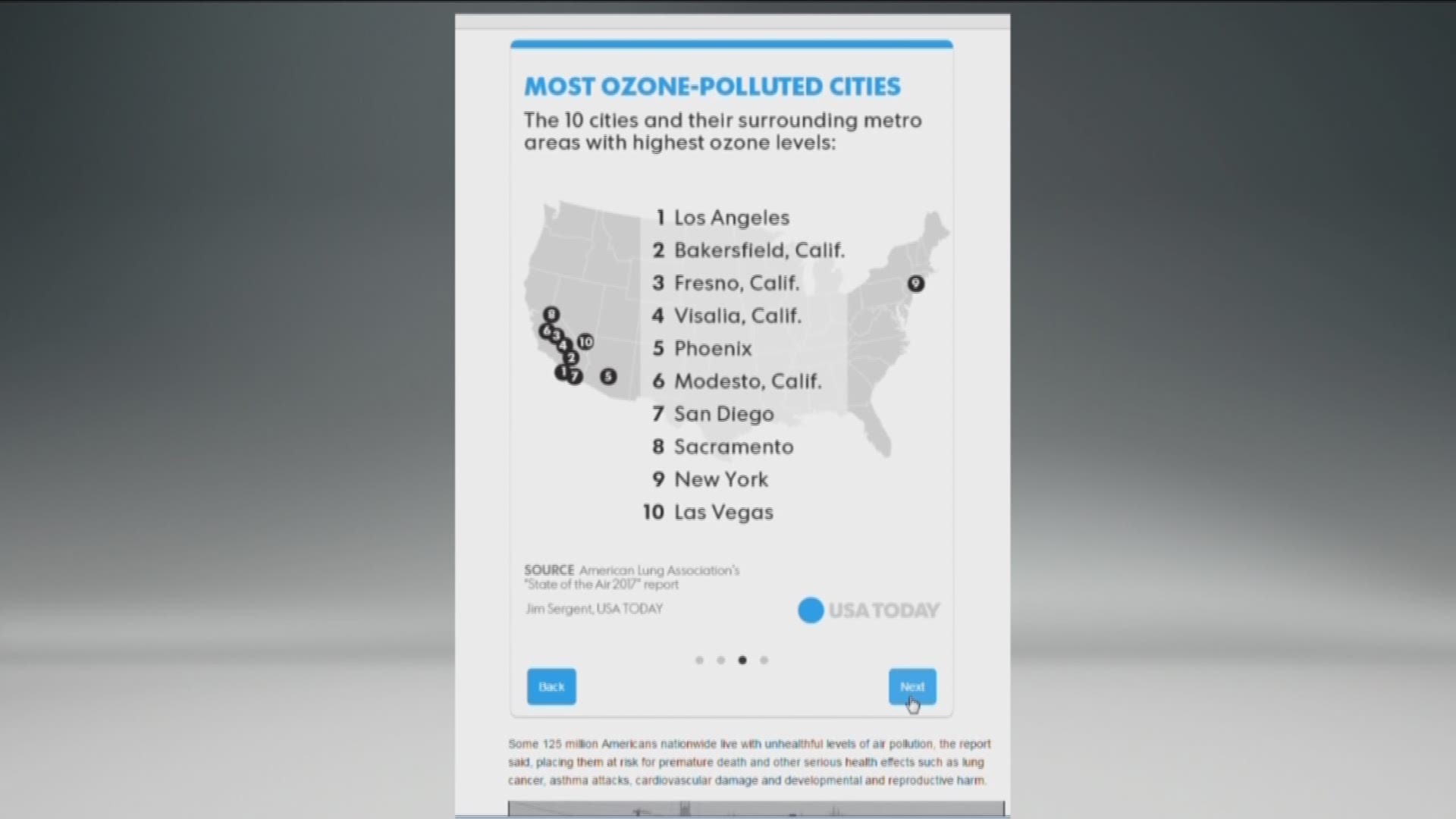SACRAMENTO, Calif. — As the Sacramento Environmental Justice Coalition celebrated this year's Earth Day with residents from South Sacramento's Fruitridge community, they wasted no time jumping into talks on environmental concerns.
Specifically, coalition leaders raised questions on the continued use of lead fuel at the nearby Sacramento Executive Airport—and the effect potential exposure can have on local residents.
The Environmental Protection Agency declared in January that piston-engine aircraft that operate on leaded fuel are "the largest remaining source of lead emissions into the air."
An interactive map generated by the Center for Environmental Health, a nonprofit based in Oakland combating lead emissions, uses data obtained from legal actions to identify areas near airports with potential for lead exposure.
Neighborhoods surrounding the airport were shown to be areas of potential exposure. According to the CDC, lead absorption can cause brain damage, negatively affect organs and other lead to long-lasting ailments.
"We definitely need local regulators to see, to study whether the traffic that's coming in and out of the Executive Airport is a problem," Herman Barahona with the Sacramento Environmental Justice Coalition told ABC10. "I'm getting radio silence."
The airport, used for charters, plane rentals, flight training and other general aviation services, has been operated by Sacramento County since 1967.
"(The airport) is in the middle of a residential neighborhood with more Black and Brown people," Barahona told ABC10. "South Sacramento is already impacted by so many issues and environmental degradation that's been going on for decades."
Concerns over lead are not new for the airport's neighbors. In 2014, the Mangan Rifle and Pistol Range just outside the airport was forced to close its doors in 2014 over concerns about tests showing high lead levels in the area.
A 2016 ABC10 report also detailed 11 houses near the range also testing for high levels of lead.
"We are aware of the concerns the residents in our communities have expressed and moving forward we will continue to communicate with them and remain transparent as we move away from avgas and toward a cleaner future," a Sacramento County Department of Airports spokesperson said in a recent statement to ABC10.


Campaign to address lead fuel use
Barahona said he took the lead in his coalition to start a concerted effort of educating community members on the airport's use of lead fuel.
The problem, Barahona said, is there's no real way of knowing the true impact lead emissions have on the surrounding communities without an environmental impact report.
Such a report must be ordered by local officials—thus Barahona said he's putting pressure on nearby agencies.
After learning lawmakers in Santa Clara County are taking active steps to phase out the use of lead fuel at their general aviation airport, Barahona said he filed a complaint with the Environmental Protection Agency in February to try and affect the same action in his county.
He also filed a formal complaint to Sacramento County supervisors regarding the lead fuel used by single-engine planes at the Executive Airport.
But other than the EPA confirming to Barahona the agency had passed on his complaint to the California EPA and the Department of Toxic Substances Control, no responses have come in.
With his online petition recently gathering more than 300 supporters, Barahona said he hopes to set the stage for the Sacramento Board of Supervisors to ban the use of lead fuel.
"They are very well aware of our petition," he said.
Pollution at small airports
When ABC10 asked the county's Department of Airports if it plans to enact policies regarding use of lead-fueled airplanes on its sites, a spokesperson cited an upcoming FAA initiative.
"Known as the Eliminate Aviation Gasoline Lead Emissions (EAGLE), this initiative is a public-private partnership between the federal government and industry stakeholders to transition to lead-free aviation fuel, known as avgas, for piston-engine aircraft by the end of 2030," the spokesperson told ABC10.
They described the initiative as a safe and practical path to a lead-free aviation system that meets the needs of all airplane fleets.
In January, the EPA announced it will see whether emissions from piston-engine aircraft using leaded fuel contribute to air pollution that endangers public health. The agency plans to issue a proposal for public review and comment later in 2022 and take final action in 2023.
Barahona told ABC10 that, for the Sacramento Environmental Justice Coalition, change cannot come quick enough.
"I lived in the Bay Area before I came here. I had no idea how bad it was here," Barahona said. "That's why I got into the work of putting a coalition together—to see if we can address these issues."
► Get more stories about race and culture: Sign up for our newsletter at www.abc10.com/email and find more online in our Race & Culture section.

















